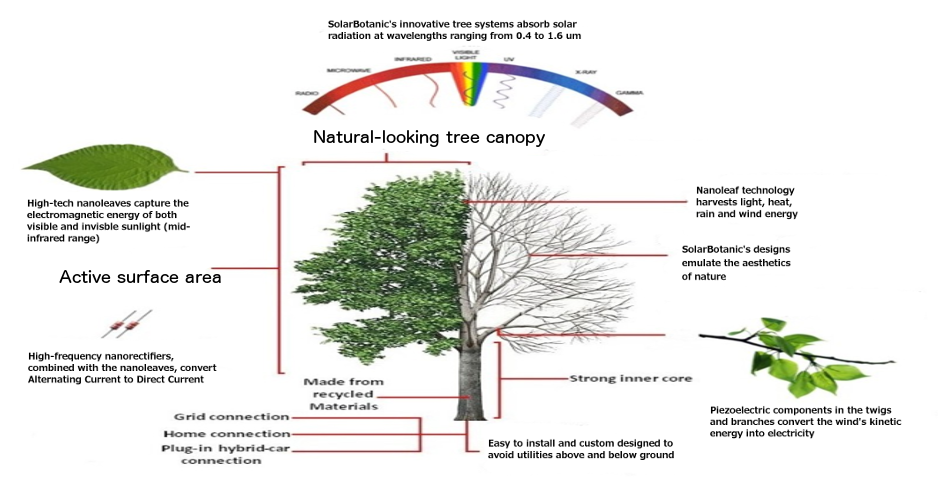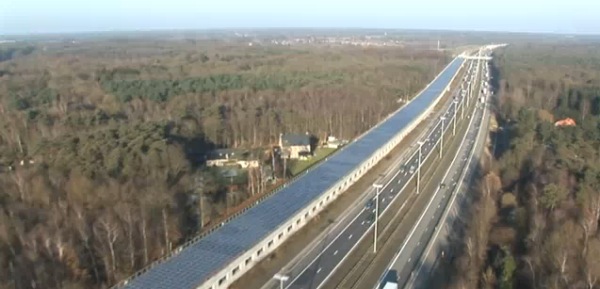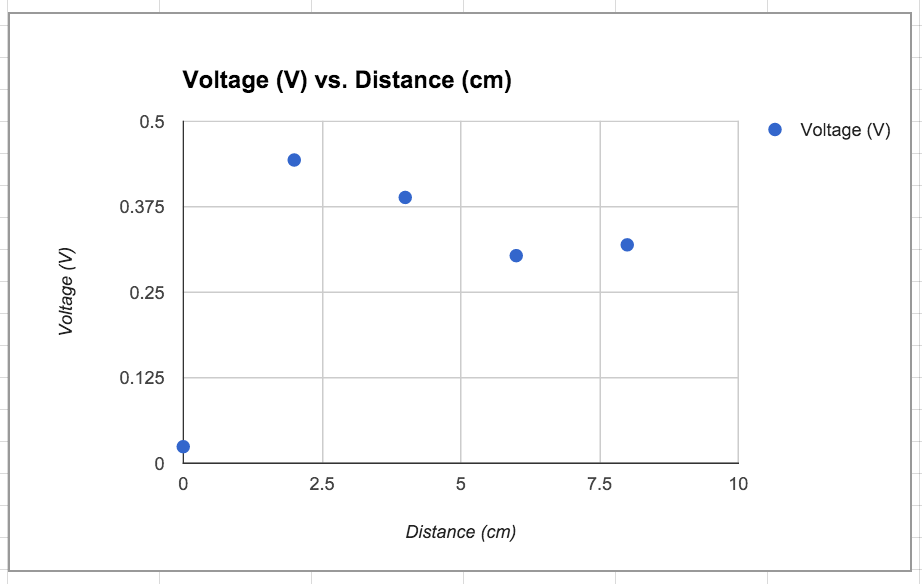There are many interesting ways to harness solar energy. These ideas come from all over the world. I will be discussing three of them in this post.
1. Solar Botanic is a company in London that creates “trees” that people can “plant” aka install on their property to harness the energy from the sun, as well as the power of the wind. While the artificial trees from Solar Botanic don’t exactly have the ability to remove carbon emissions and pollution like a natural tree, these trees can directly provide power to your car and your home. Nanoleaves, composed of nantenna electromagnetic collectors, convert both “visible” and “invisible” radiation into electricity. This sophisticated approach allows for energy to be gathered at a high efficiency even after the sun has set, or on a cloudy day. The image below represents how the product works.

2. Scott and Julie Brusaw have created and are still in the research and development stage of Solar Roadways. They are a startup company founded in 2006 in Sandpoint, Idaho. If immediately implemented, an entirely unrealistic prospect even by the company’s own admission, with commercially produced solar panels available today, the resulting energy savings gained from not burning fossil fuels could cut the nation’s greenhouse gas emissions in half, according to Solar Roadways projections. Solar road panels are made with layers of super-strong glass embedded with photovoltaic cells, electrical wiring and LED lights, which can be used to create signs on the surface directing traffic or alerting motorists to hazardous conditions. The picture below is a rendering of what a Solar Roadway would look like.

3. Engineers in Belgium officially switched on Europe’s first solar powered train tunnel, spanning a 2.1-mile stretch of the rail line connecting the City of Lights to Mokum. The installation’s 16,000 solar panels will be used to provide 50 percent of the energy needed to power nearby Antwerp Central Station and to provide extra juice for both high-speed and traditional trains. Originally developed to help protect travelers from falling trees in an ancient forest, the project is expected to produce up to 3,300 megawatts hours per year, while decreasing annual CO2 emissions by about 2,400 tons.

References:
1. Solar Botanic
http://solarbotanic.com/how-it-works/
2. Biofriendly Corporation
http://biofriendly.com/blog/solar/10-inventive-ways-to-use-solar-power/
3. How Stuff Works
http://science.howstuffworks.com/environmental/energy/solar-roadways.htm
4. Engadget
http://www.engadget.com/2011/06/07/europes-first-solar-powered-train-tunnel-goes-live-on-belgian-h/
 The second graph represents our results in regards to the filters. We experimented with four filter colors, yellow, red, blue, and purple. Yellow allowed for the highest amount of voltage while red allowed for the lowest. Second and third highest were purple and blue respectively.
The second graph represents our results in regards to the filters. We experimented with four filter colors, yellow, red, blue, and purple. Yellow allowed for the highest amount of voltage while red allowed for the lowest. Second and third highest were purple and blue respectively. 



